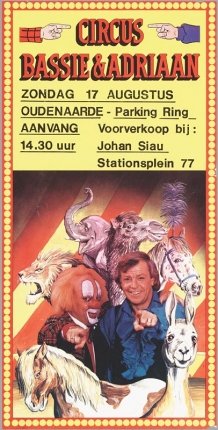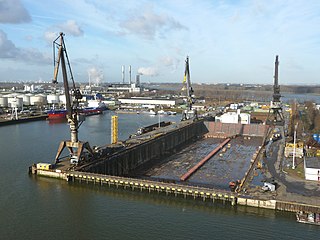
Adrianus Marinus Kyvon, known by his stage name André van Duin, is a Dutch comedian, singer-songwriter and television presenter. Van Duin is one of the Netherlands' best known entertainers, with a career spanning almost six decades.

Circus Herman Renz is the largest circus in the Netherlands, and has been touring the Netherlands and other countries since 1911.

Circus Bassie & Adriaan was a large Dutch circus that had made different tours through the Netherlands and Belgium. It has been touring in the periods 1980–1982 and 1985–1989.

Johannes Chrishostomus "Kick" Smit was a Dutch football player. He earned 29 caps and scored 26 goals for the Netherlands national football team, and played in the 1934 and 1938 World Cups. He is the first Netherlands football player who scored a goal in a World Cup. During his club career, he played for HFC Haarlem.

Te land, ter zee en in de lucht was the longest-running general amusement television show and game show of the Netherlands, originally broadcast by TROS.

XerxesDZB is a Dutch football club based in Rotterdam.
Utrechtse Sportvereniging Elinkwijk, known as USV Elinkwijk is a Dutch football club, based in Utrecht. It played professional football during the years 1955–1970. Marco van Basten was a player of the club during his youth years.

Keith Matthew Spurgeon was an English football player and manager.

Netherlands competed at the 1964 Summer Paralympics in Tokyo, Japan. The team included 8 athletes, 5 men and 3 women. Competitors from Netherlands won 14 medals, including 4 gold, 6 silver and 4 bronze to finish 10th in the medal table.

Franz Fuchs was an Austrian professional football manager. He coached ADO Den Haag, BVC Rotterdam, Holland Sport, Blauw-Wit Amsterdam, Feijenoord, Blauw-Wit Amsterdam, SK Sturm Graz, Belenenses and Hamborn 07.

Pieter Abramsen was a Dutch sculptor, and visiting professor at the Delft University of Technology, known for his work in which abstraction and realism are joined.

Dora Dolz de Herman was a Spanish-Dutch artist, best known for her outdoor ceramic works in the form of chairs and sofas.
Teunis (Teun) Jacob was a Dutch wall painter and sculptor, who lived and worked in Rotterdam since the early 1950s. He made both figure and nonrepresentational art.
Daniël (Daan) van Golden was a Dutch artist, who has been active as a painter, photographer, collagist, installation artist, wall painter and graphic artist. He is known for his meticulous paintings of motives and details of everyday life and every day images.
The Hendrik Chabot Award is an annual award for visual artists presented by the Prins Bernhard Cultuurfonds, section South Holland. The prize ceremony is in the city hall of Rotterdam, where the prize is given by The Mayor of Rotterdam and the King's Commissioner in the province. The reward is named after the Rotterdam artist Hendrik Chabot.
Axel en Helena van der Kraan were a sculptor-duo from the Netherlands, consisting of Axel van der Kraan and Helena van der Kraan-Maazel (1940–2020), active as sculptors and draftsman.

Damen Verolme Rotterdam, is a repair shipyard in Rotterdam, Netherlands.

Hendrik Everhart (Henk) Tas is a Dutch visual artist, working as a sculptor, photographer, graphic artist, and wall painter.
Gerard Weber is a Dutch former professional footballer for Excelsior Rotterdam. Nicknamed Webertje, Weber was known for his speed. He played both as a midfielder and as a forward. Weber won several championships with Excelsior. He went on to manage football teams in the Rotterdam region, living in Zwijdrecht.

Janine Wegman was a Dutch Hammond-organist and artist based in Rotterdam. She was one of the first Dutch people to be openly transsexual.
















